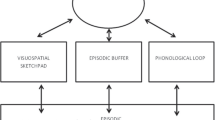Abstract
The opposition between core and peripheral cognitive relations.
Access this chapter
Tax calculation will be finalised at checkout
Purchases are for personal use only
Similar content being viewed by others
Notes
- 1.
I use this metaphor to express the basic informational function of this element. Complain is a verb of communicative action, or verbum dicendi, and what I call here the “motive” is probably the Content of the message.
- 2.
This applies more rigorously to the Portuguese verb morar; English live has a wider semantic value, including ‘be alive’.
- 3.
It would be significant to find that core elements are always necessarily overt—but this statement does not make sense if “core” is defined using conditions on overt occurrence. Incidentally, the statement is not true: core elements can be omitted in many cases (e.g., the girl is reading), and there are cases in which peripheral information must be present (see examples in Sect. 1.7.2.2).
- 4.
We will study in Chap. 7 the interplay of transparency with prototypicity, stated by linking rules.
- 5.
This situation is reflected in English with think in I think of you sometimes, as against I think about you sometimes, where the preposition is prototypically a Content marker. In Portuguese, the Content marker is sobre, unambiguously ‘about’ (the locative reading of sobre ‘on’ is archaic in Brazilian Portuguese).
- 6.
In English last week is not properly an NP, for it lacks a determiner. In Portuguese, a semana passada has the internal structure of a normal NP; but we also find semana passada, without the article, used only as a marker of “time” (Bolinger 1992, studied these “adverbial NPs” in English and Spanish).
- 7.
Faulhaber’s position is in this point analogous with that of G. Gross and Blanche-Benveniste, criticized in Sect. 4.4.4.2.
- 8.
That is, in one example out of 38 sentences.
- 9.
That is, when it is possible to define a group of CSRs whose higher percentages differ in less than 20 % among them, and in more than 50 % from the set of the lower percentages.
References
Bennett, David C. 1975. Spatial and Temporal Uses of English Prepositions. London: Longman.
Bolinger, Dwight. 1992. Adverbial nouns in English and Spaniss. In Traili (ed.).
Borba, Francisco da Silva (ed.) 1990. Dicionário gramatical de verbos do português contemporâneo do Brasil [Grammatical dictionary of verbs of contemporary Brazilian Portuguese]. São Paulo: Ed. UNESP.
Bugarski, R. 1968. On the interrelatedness of grammar and lexis in the structure of English. Lingua, 19, p. 233-263.
Chomsky, Noam. 1965. Aspects of the theory of syntax. Cambridge, MA: MIT Press.
Cowart, Wayne. 1997. Experimental Syntax: Applying Objective Methods to Sentence Judgments. Thousand Oaks, CA: Sage Publications.
Culicover, Peter W., and Ray S. Jackendoff. 2005. Simpler Syntax. Oxford: Oxford University Press.
Dik, Simon C. 1980. Studies in Functional Grammar. London: Academic Press.
Dik, Simon C. 1989. The Theory of Functional Grammar. Dordrecht: Foris.
Faulhaber, Susen. 2011. Verb Valency Patterns. A Challenge for Semantic-based Accounts. Berlin: De Gruyter Mouton.
Fillmore, Charles J. 1970b. Subjects, speakers, and roles. Synthese 21, pp. 251-274.
Hirsch, E.D., Jr. 1987. Cultural Literacy: what every American Needs to Know. New York: Vintage Books.
Jackendoff, Ray S. 1990. Semantic Structures. Cambridge, MA: MIT Press.
Langacker, Ronald W. 1991. Foundations of Cognitive Grammar—vol. II, Descriptive Application. Stanford: Stanford University Press.
Pustejovsky, James. 1995. The Generative Lexicon. Cambridge, MA: MIT Press.
Ruppenhofer, Josef et al. 2006. FrameNet II: Extended Theory and Practice. Available at <framenet.icsi.berkeley.edu>.
Santana, Liliane. 2009. Nominalizações como construções valenciais [Nominalizations as valential constructions]. In Pezzati, ed. (2009).
Schütze, Carson T. 1996. The Empirical Base of Linguistics. Grammaticality Judgments and Linguistic Methodology.Chicago: The University of Chicago Press.
Talmy, Leonard. 1996. The windowing of attention in language. In Shibatani and Thompson (ed.).
Author information
Authors and Affiliations
Rights and permissions
Copyright information
© 2015 Springer International Publishing Switzerland
About this chapter
Cite this chapter
Perini, M.A. (2015). Core CSRs. In: Describing Verb Valency. Springer, Cham. https://doi.org/10.1007/978-3-319-20985-2_5
Download citation
DOI: https://doi.org/10.1007/978-3-319-20985-2_5
Publisher Name: Springer, Cham
Print ISBN: 978-3-319-20984-5
Online ISBN: 978-3-319-20985-2
eBook Packages: Humanities, Social Sciences and LawSocial Sciences (R0)




